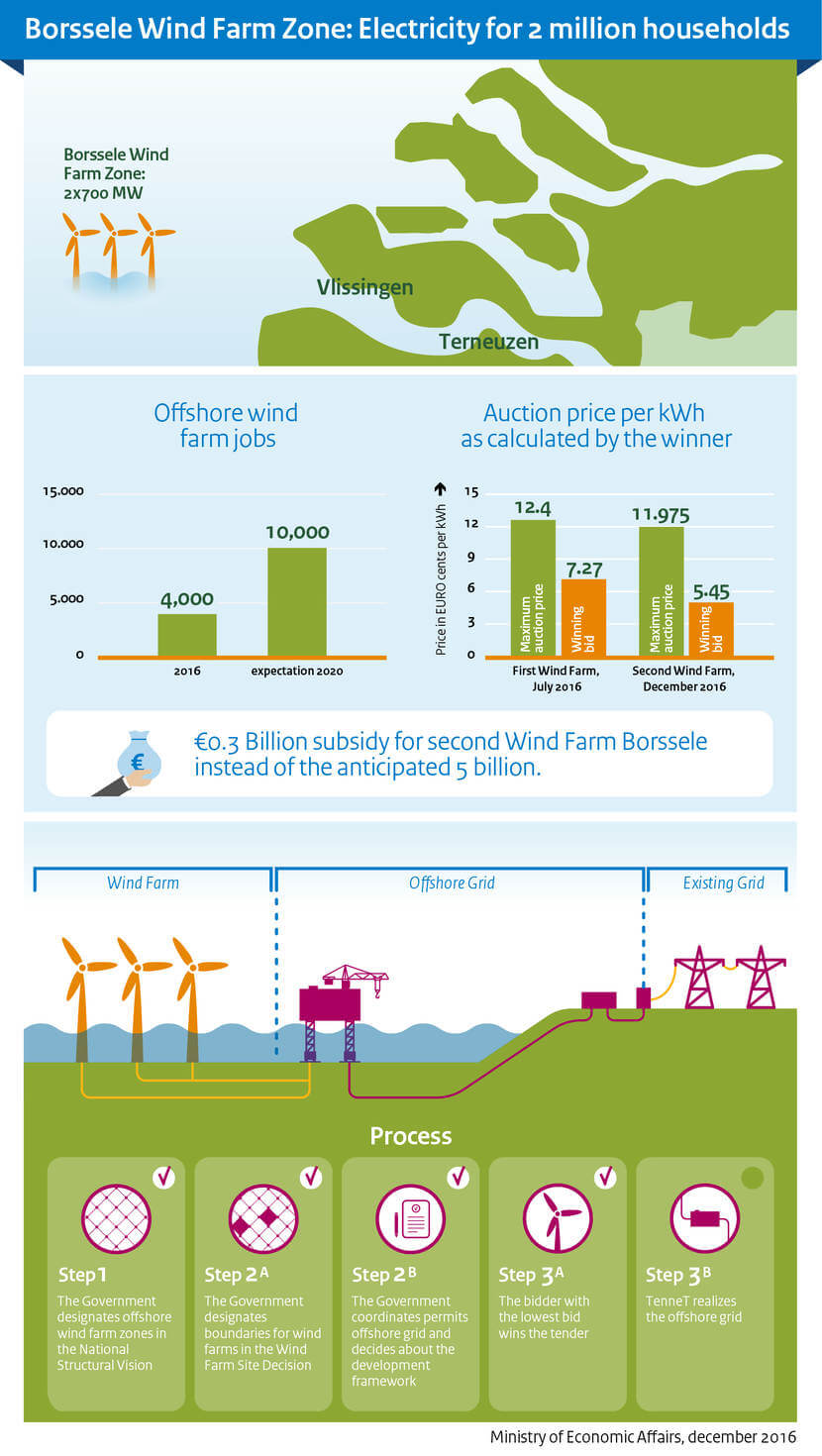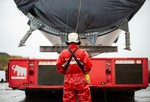News Release from windfair.net
Wind Industry Profile of
Price Slump: Offshore Wind Energy is Getting Cheaper and Cheaper
Meanwhile, this is also reflected in the prices of offshore wind power. New lows were reached, as the last tender in the Netherlands showed earlier this week. There, the contract was awarded to a consortium consisting of the oil company Shell, Eneco and Van Oord, for the Borssele III and IV regions. The consortium won the tender with an offer price of only 5.45 Eurocents per kilowatt hour (kWh), a new record in the Netherlands, as Minister of Economics Henk Kamp proudly proclaimed: "A new price breakthrough." And even Greenpeace was impressed: "Spectacular!"
In summer, the Danish energy group DONG Energy had received the first two areas of Borssele for a price of 7.27 cents per kWh – which was also a record at that time. In the meantime, however, the price spiral has turned sharply and new low price slumps have been reported from other regions of Europe.

At the beginning of November, Denmark set new standards: Swedish energy supplier Vattenfall won the Kriegers Flak project in the Baltic Sea for 4.99 cents per kWh, which is the lowest price for offshore wind energy worldwide. According to Kamp, however, the Swedes are having advantages, because the project is located closer to the shore and the sea floor is about 20 m flatter.
Further reasons for the low prices are, on the one hand, particularly low interest rates, which ensure that the mammoth projects can be built more favorably overall. However, new innovations as well as the tough price competition of the turbines manufacturers are having a positive effect on the price. In Europe, world market leader Siemens battles with Senvion and MHI Vestas.
Even the Americans now want a piece of the cake. For example, General Electric recently secured themselves an offshore turbine by taking over Alstom and would like to fight for market shares in Europe first.
In their US home, on the other hand, the offshore market is just beginning to emerge. As a major milestone, it was announced this week that the first US offshore wind farm Block Island is producing electricity. However, the size of this farm compared to European offshore power plants is still very small and is more reminiscent of the initial phase 10 to 15 years ago. Just 17,000 households can be supplied with the power of the five turbines, while the large projects in Europe supply electricity to some one million households.
The low prices also make it easier for the politicians to breathe. In the Netherlands, for example, they are already thinking of abandoning subsidies for offshore wind within the next ten years, as Minister Kamp suggests: "If the electricity price develops as we expect, in 7.5 years’ time subsidies will no longer be required for the production of electricity from offshore wind farms. That brings the Government's aim for renewables to compete with fossil fuels without subsidy within reach."
- Author:
- Katrin Radtke
- Email:
- kr@windfair.net
- Keywords:
- wind energy, Vattenfall, Shell, Senvion, Siemens, offshore, cost reduction, Netherlands, GE, US, offshore wind energy










